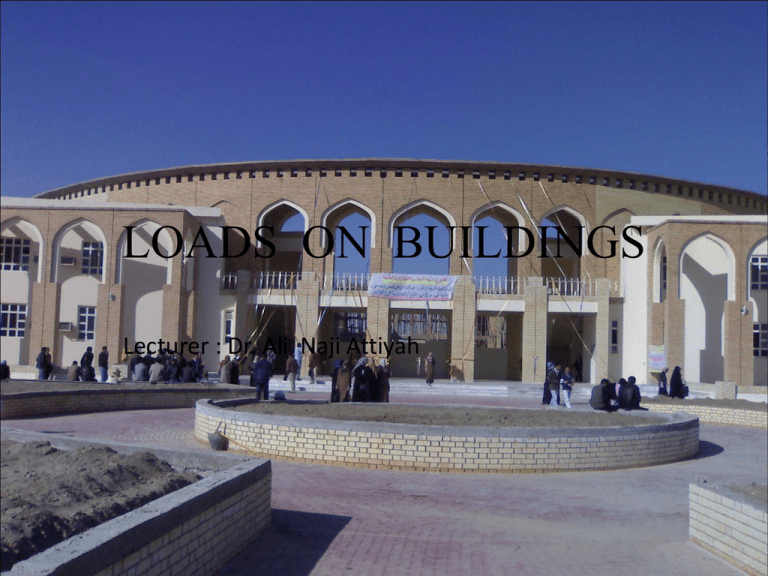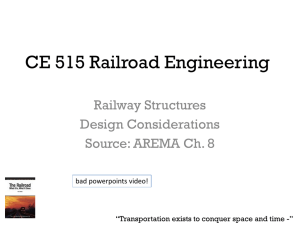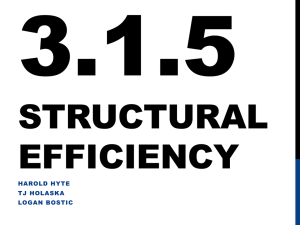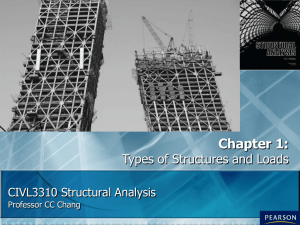LOADS ON BUILDINGS
advertisement

LOADS ON BUILDINGS Lecturer : Dr. Ali Naji Attiyah DESIGN PROCESS Design is the determination of the general shape and all specific dimensions of a particular structure so that it will perform the function for which it was created. So , good design must be safe and economic. Member Dimension Loads Design Process Strength Reinforcement Ratio SCOPE OF THE LECTURE • Types of loads. • Static and dynamic loads. • Dead and live loads. • Blast loads. • Seismic loads. TYPES OF LOADS Loads are classified as static and dynamic . Static loads are independent from time but dynamic loads are function of time. Dead and live loads are types of static loads. Dead loads are those have unchangeable locations in structure and their values are certain and constant . Live loads are those movable and their values are uncertain. Dead loads are calculated easily using structure dimensions and material density . Live loads are movable and their values are uncertain , so they can not be calculated directly and local or international specifications shall be consulted. International Building Code IBC 2009 published live load values dependent on types of building occupancy. 80 psf 100 psf 50 psf Dynamic loads The other group of loads is the dynamic loads , and the following are types of such loads: Blast load Wind load Impact load Seismic load Flood load BLAST LOADS Blast loads are an increase in atmosphere pressure which make buildings applied to uniform pressure . Blast pressures increases with increasing TNT weight and vice versa if the explosion distance is increased. Example1 If a building is designed to carry 0.5 psi overpressure safely, evaluate the required stand-off distance for small cars. Example2 Can the same building withstand an explosion of a truck carrying 10000 pounds of TNT at a distance 1500 foots ? SEISMIC LOADS Seismic loads on buildings are caused by movement in foundations . The acceleration of this movement is very rapid and its value is highly increased with height. Different types of failure are found in the same earthquake , because of different modes of movement. Seismic load is applied as horizontal shear at the building base. The shear force is proportional to the building weight (W) and calculated from : V = Cs . W Cs is the seismic response coefficient which is found from : Cs = SDS / ( R/I) R is the response modification factor , which is dependent on the type of structure and can be found from the table below. I is the importance factor ,which is dependent on the occupancy category and is taken 1.25 for building designed for more than 300 person and 1.0 for ordinary building. SDS is the design acceleration response , which is function of the earthquake ground motion. Countries all over the world have seismic maps and the designer can evaluate SDS directly. Unfortunately, for our country there is no such map , so, the value of SDS should be estimated for Iraq. Estimate a similar seismic zone between Iraq and USA… Choose the proper contour for Najaf and note that the numbers are measured as percentage from the ground acceleration (%g). Compare the value of the design acceleration response SDS for Najaf with that prepared by others. Example For a reinforced concrete ordinary building , find the horizontal seismic shear shall be applied at the base level. Note that the building will be constructed at Najaf. Ans: 0.062 W QUESTIONS ?






